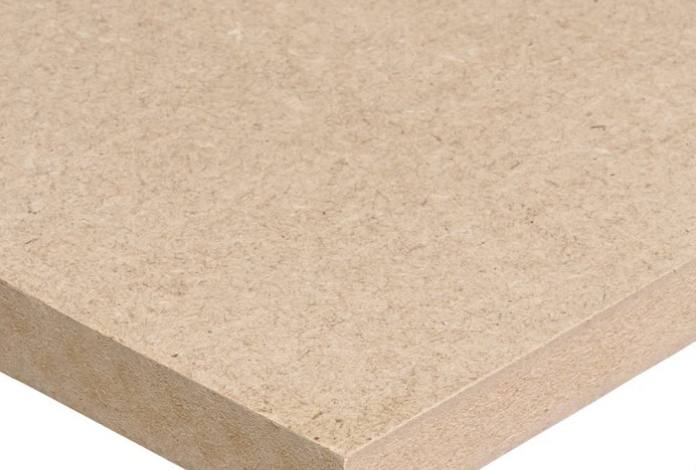What Are Some Of The Common Mistakes When Installing MDF Wall Panels?

MDF wall panels have gained extreme popularity among homeowners and interior designers. With its versatility, affordability, and aesthetic appeal, MDF is the perfect material for decor and functional purposes.
MDF can be a highly effective material, whether you want a modern, sleek finish or a traditional look with unique MDF wall panels.
This includes installing sheet MDF, which is relatively simple. However, several common mistakes can completely undermine the appearance and durability of a finished product.
In this post, we’ll explore some of the most common errors made during MDF wall panel installations and provide you with handy tips and advice to avoid them.
1. Choosing the Wrong Type of MDF
The most common mistake when working with MDF is choosing the wrong type for the project. Although standard sheet MDF is very versatile and practical for most indoor projects, special needs may dictate other characteristics, such as moisture or fire resistance.
If one is installing MDF wall panels in a bathroom or a commercial kitchen, moisture-resistant MDF is essential to avoid warping or swelling over time.
Fire-retardant MDF is best applied in areas with fire safety concerns, such as commercial spaces or homes with regulations requiring it. The MDF there is treated to slow down the spread of fire and add extra protection in case of a fire hazard.
Tip: The place where the panels will be installed is analyzed, after which the type of MDF appropriate to the conditions is chosen.
2. Inaccurate Measurements
Another mistake is improper measurement. This will always produce non-fitting panels and wastage of materials, a poor finish at best. MDF panel sheets are generally large, so careful measuring is required to cut them to fit your wall space.
Moreover, when installing the tongue-and-groove MDF wall panels, measurement errors will result in gaps between the panels, from which interlocking cannot be done, thus opening pathways toward a finish that is less than seamless.
Tip: Measure at least twice before cutting your MDF panels to ensure accuracy. During installation, it’s also helpful to use a spirit level to keep the panels straight and even.
3. Inadequate Preparation of the Surface of the Wall
A wall surface is merely available for the MDF panels. The most readily apparent flaws that most people need help to seek are cracked and bumpy walls or patches in uneven areas, which may not be noticeable before placing the panels but will find their expression later.
Tip: Ensure that the wall is clean, dry, and free from any imperfections. Filling any cracks or holes and sanding the surface before starting the installation will help to ensure that your panels adhere smoothly.
4. Incorrect Cutting of the Panels
The most common issue with DIYers is cutting sheet MDF panels inaccurately. For most of you, this is because MDF is a dense material that chips or splinters easily if not cut properly with the appropriate tools, contributing to a poor finish.
For tongue-and-groove MDF wall panels, precision comes first. Cutting errors can cause the slats to not slot together absolutely perfectly, which can easily damage the design’s artistic and practical value.
Tip: Use a fine-tooth saw blade designed for MDF to get clean, precise cuts. For large MDF panels, it’s also advisable to use a table saw or circular saw and clamp the panels securely while cutting to avoid movement.
5. Sealing and Priming Error
MDF has an absorptive capacity, which means it becomes prone to swelling and warping when moistened. Failure to apply appropriate coating or priming results in ugly blemishes that shorten the life span of your wall panels.
This is even more critical for Fire-Retardant MDF, as the finish coat should retain that protection property while still providing a clean and professional-looking finish.
Tip: Use a primer on the MDF everywhere the edges are exposed prior to mounting or painting. This prevents the board from absorbing moisture and provides a surface that is perfect for painting or finishing.
6. Using the Wrong Adhesive
Correct fasteners need to be chosen to ensure the long life of your MDF wall panels. Low-quality adhesives or inappropriate screws may make the panels loosen early, especially in highly trafficked areas or wet environments.
Tip: Opt for a robust adhesive meant for bonding MDF. When screwing the panels together, it is best to pre-drill pilot holes to avoid cracking.
7. Speeding Up the Installation Process
Installation of MDF wall panels takes time, but most people rush their pace to save time. Essential steps like priming and careful measurement may be totally missed, resulting in poor outcomes that will not stand in the long run.
Tip: Be thorough at each point of the installation phase. Remember to respect the manufacturer’s suggested drying time and install each panel correctly before proceeding to the next one.
8. Not Wearing Safety Precautions
Finally, most individuals make a common mistake when installing MDF without following any preventive measures. In reality, MDF contains urea-formaldehyde, which can be very dangerous when inhaled and significantly when cut or sanded.
Tip: When handling MDF, always wear a dust mask along with protective eyewear. Use well-ventilated areas for cutting or sanding, and be sure you are equipped with the correct tools for the job to avoid injuries or damage to your material.
Conclusion
Installation of MDF wall panels, whether sheet MDF, tongue-and-groove MDF wall panels, or Fire-Retardant MDF, all add significantly to a room’s aesthetic and functional value.
For a long-lasting professional finish, common mistakes such as inaccurate measurements, inadequate preparation, or improper installation techniques should be avoided.
If your MDF wall panels are done right with the proper application of skills, they will not only look great but also last a long time.
Choose Builders Merchant for suitable materials and a healthy dose of precision when embarking on the process of reaping the rewards of your MDF installation.



